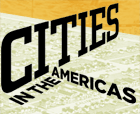
Part I:
Maps Part II:
Southeast Part I: Founding CitiesWhen Isaac Newton Phelps Stokes (1867–1944) donated his comprehensive collection of American historical maps, prints, and drawings to The New York Public Library in 1930, the works were already well known to Library visitors, having first been exhibited here in 1917, and again starting in 1927. By his own count, the collection numbered some 600 items, and covered a period of four centuries, from the early decades of European exploration in the 16th century through the late 19th century. A child of progressive reformers, Stokes was also an architect with a dedication to low-income housing (he spent nights among the poor as part of his research). As a trustee of The New York Public Library, and a member of the Art Commission of the City of New York and the Municipal Art Society, he continually had his hand in civic and cultural projects in his native city, from the University Settlement House on the Lower East Side to the preservation of Central Park. He ensured that his own historical print collection documenting the growth of the American urban scene was placed in a suitable public institution, where it would be readily available to all. Stokes bought his first historical print in 1892, but he began collecting in earnest in 1908, as he embarked on compiling material for The Iconography of Manhattan Island, his exhaustively documented history of New York City. His stated aim was to establish “an historical cabinet, similar in scope and character to those forming part of the national picture collections in many European cities, and illustrating the development and history of our country.” He continued to add to the collection even as the first catalogue (Stokes & Haskell, American Historical Prints, 1933) was in preparation. Letters and telegrams were dispatched to agents in strategic cities as late as 1930 to secure views of towns and cities not yet represented. Stokes was well aware that his collection formed a survey not only of the growth of America’s urban landscape, but also of its printmaking industry. Early images, though often drawn on site, were inevitably engraved in Europe, and reflected the Old World tradition of city views dating to the first century of printing. By the 1820s, growing numbers of artists and printers with the necessary expertise were settling on this side of the Atlantic. With the emergence of lithographic printing establishments in North America, a truly American industry began to grow. By 1900, thousands of views had been produced of well over 2,000 towns and cities, new and old, large and small. Many of the earliest images of the New World were profile views taken from a distance, or map-like bird’s-eye views. From about 1850, a distinctive genre of bird’s-eye views of cities, imagined as if seen from the air, provided remarkable detail and accuracy. They became an extraordinarily popular means to promote the new cities emerging on the American frontier.
|